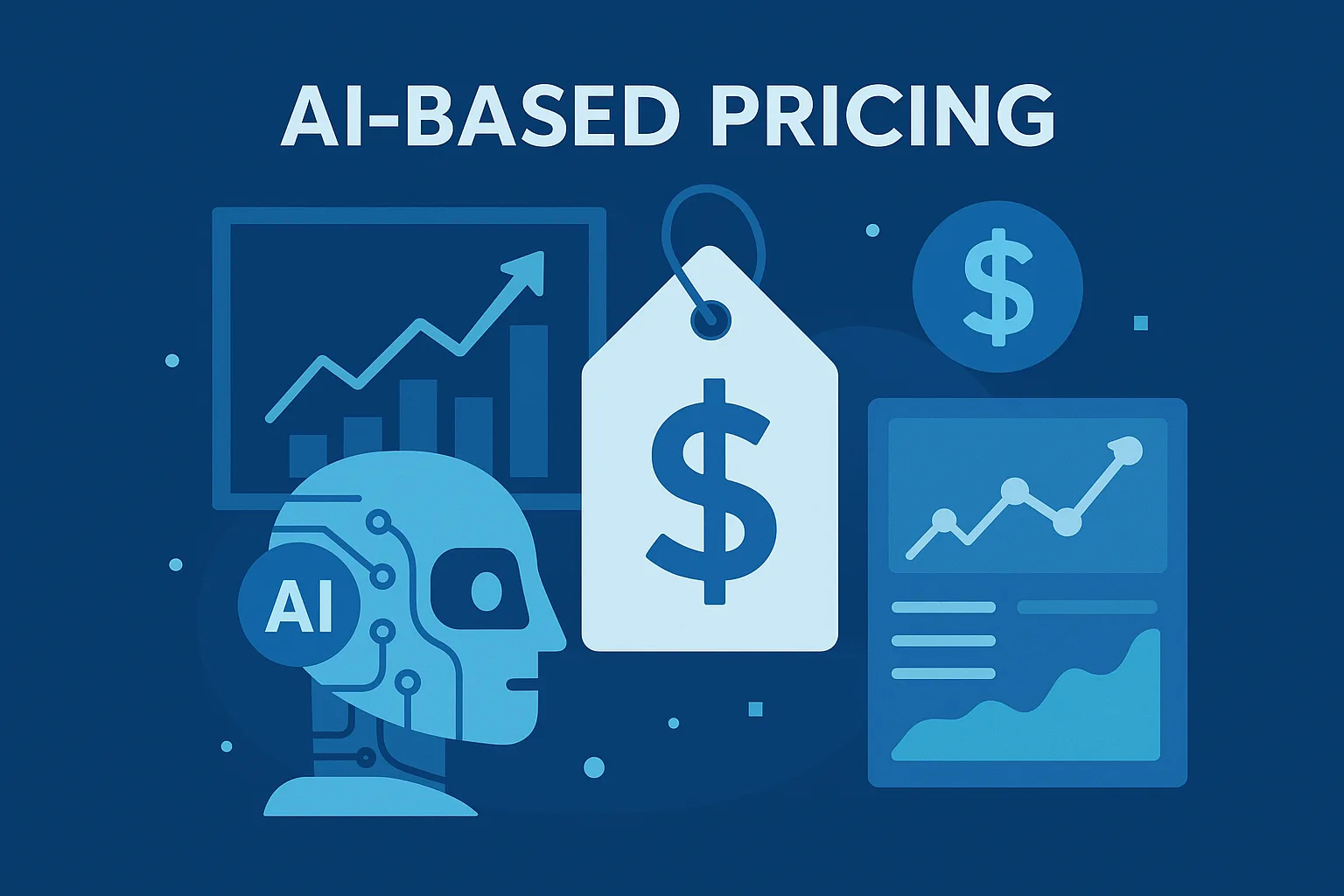Mining is an industry where seconds matter, equipment failures cost millions, and every operational decision ripples across the bottom line. So why are so many mines still reacting to breakdowns instead of preventing them?
Welcome to the age of predictive maintenance in mining—a smarter, AI-powered approach that helps mining companies catch equipment issues before they become costly outages. It’s fast becoming the new standard for operational leaders who want to reduce downtime, improve safety, and protect their margins.
Executive Summary:
In an era where mining operations are under pressure to do more with less, predictive maintenance in mining offers a high-impact opportunity to reduce breakdowns, cut costs, and increase uptime—without overhauling your entire infrastructure.
With the help of sensors, IoT mining solutions, real-time data, and machine learning, mines can now predict failures before they happen and schedule maintenance at the perfect moment—not too early, not too late.
For COOs, CTOs, and maintenance heads, the message is simple: predictive maintenance isn’t a tech experiment anymore—it’s a boardroom-level strategy built for the era of Industry 4.0 in mining.
Maintenance: The Hidden Cost Center That’s Holding You Back
Maintenance is often seen as a “back-office” function. But in mining, it’s anything but background noise. It’s what keeps the trucks rolling, the belts moving, and the profits flowing.
Maintenance costs account for up to 50% of operating expenses in mining.
Most mines still rely on reactive or scheduled maintenance—meaning they either wait for something to break or follow a rigid time-based schedule.
Here’s the catch: 82% of equipment failures happen at random. That means most failures still blindside operators, despite having a maintenance schedule in place.
And those failures aren’t cheap:
- A shovel going down can cost $60,000 per hour.
- A haul truck outage racks up $3,000 every hour it’s idle.
If you’re responsible for production targets, you already know: when maintenance isn’t optimized, everything else suffers—including safety, throughput, and morale.
The Evolution of Maintenance in Mining
Maintenance has come a long way, but most operations are still stuck in Levels 1 or 2:
| Level | Approach | Description |
| 1 | Reactive | “Fix it when it breaks.” High downtime, expensive repairs, and high risk. |
| 2 | Preventive | “Service it every X days.” Can lead to wasted labor and over-maintenance. |
| 3 | Condition-Based | “Service it when sensors say something’s off.” Limited predictive power. |
| 4 | Predictive (AI-driven) | “Fix it before it fails.” Uses real-time data and AI to forecast issues. |
| 5 | Prescriptive | “Let the system handle it.” AI automates repair decisions. |
Level 4 and 5 systems rely on advanced analytics and AI in mining operations to elevate reliability and decision-making. But most companies aren’t there—yet.
Why Predictive Maintenance is a C-Suite Imperative
So what makes predictive maintenance in mining so appealing to senior decision-makers?
Because it solves the problems that matter most:
- Mining downtime reduction: Predictive systems detect issues weeks in advance, giving you time to act.
- Cost Control: Less emergency repair, less overtime labor, fewer idle parts.
- Mining asset reliability: More consistent throughput and fewer surprises.
- Safety: Reduces high-risk, urgent repair scenarios.
- Sustainability: Extends equipment life and minimizes environmental impact.
It’s also one of the few digital initiatives with near-immediate ROI. Many mines recover their investment in under 12 months.
What Predictive Maintenance Looks Like in Practice
Let’s demystify how it works:
- Sensors are installed on high-value equipment—haul trucks, drills, crushers, conveyors.
- These collect data on vibration, temperature, pressure, oil quality, and more.
- Data streams to an analytics platform, often cloud-based, powered by BeamData predictive analytics.
- Algorithms detect anomalies and send alerts or auto-generate work orders.
- Maintenance happens during planned downtime—not during emergencies.
In this system, condition monitoring mining becomes proactive rather than reactive. Your maintenance team moves from firefighting to strategic asset care.
Real Mining Wins: Predictive Maintenance in Action
Across the globe, predictive maintenance in mining is delivering real results:
- Votorantim Cimentos saved $5.5M using predictive analytics across quarry assets.
- Rio Tinto centralized equipment health data across multiple sites, improving coordination.
- A South African gold mine avoided mill failure thanks to AI flagging vibration anomalies.
- Beam Data has helped operators cut unplanned downtime by 70%, lower costs by 30%, and reduce safety incidents by 40%.
These are not futuristic case studies. They’re happening now—and reshaping what’s possible in mining operations.
What’s Getting in the Way? Common Hurdles (and How to Clear Them)
Yes, predictive maintenance in mining can seem daunting. But most obstacles are solvable:
| Challenge | Solution |
| “It’s too expensive.” | Start small with a pilot. Show ROI, then scale. |
| “We don’t have the data.” | Most machines already emit data. Work with experts to clean/integrate. |
| “My team doesn’t trust AI.” | Keep humans in the loop—AI flags issues, people decide next steps. |
| “Our equipment is old.” | Sensors can be retrofitted, even on legacy assets. |
| “We don’t have time.” | Predictive tools reduce time wasted on urgent, unscheduled work. |
Strategic Recommendations for Executives
If you’re a mining executive, here’s your action plan:
- Audit your biggest pain points
Identify your most failure-prone and costly assets. - Don’t boil the ocean
Start with a targeted implementation (e.g., haul trucks, crushers). - Pick partners with mining expertise
Not just any AI vendor—work with those who understand the mining lifecycle. - Align with ESG and safety goals
Predictive maintenance in mining supports safer, greener operations. - Define success metrics
Examples:- Downtime hours reduced
- % emergency maintenance decrease
- ROI time frame
- Increase in mining asset reliability
- Downtime hours reduced
Turn Maintenance Into a Competitive Advantage
Mining is a tough business. Margins are thin. Risks are high. But predictive maintenance in mining is one of those rare innovations that strengthens every part of your operation—cost, uptime, safety, ESG, and workforce morale.
This isn’t about replacing your workforce or tearing out legacy systems. It’s about augmenting your people with IoT mining solutions and AI that enable smarter, faster decisions.
So ask yourself:
Is your operation still reacting to breakdowns?
Or are you ready to leverage Industry 4.0 in mining and lead with foresight?
👉 Let’s Talk
If you want to explore how predictive maintenance in mining could fit into your digital roadmap, Beam Data can help. We’ve helped mining teams across North America implement BeamData predictive analytics that drive real ROI—fast.
🔗 Book a 30-minute consultation to assess your predictive readiness and receive a custom roadmap.
FAQs: Predictive Maintenance in Mining
1.What is predictive maintenance in mining, and why is it important?
Predictive maintenance in mining uses AI, sensors, and real-time data to detect equipment issues before they cause failures. It’s important because it reduces unplanned downtime, cuts costs, and improves both safety and productivity—turning maintenance from a cost center into a strategic advantage.
2. How does AI improve mining operations?
AI in mining operations analyzes massive streams of sensor data to identify hidden patterns and predict failures. It helps maintenance teams focus on high-risk assets, schedule repairs intelligently, and avoid unnecessary servicing—saving time and money across the board.
3. Can predictive maintenance help reduce mining downtime?
Absolutely. One of the biggest wins is mining downtime reduction. By detecting issues early, predictive systems give maintenance teams time to respond during planned windows, rather than scrambling during unexpected outages. This helps keep production on schedule and costs under control.
4. What are IoT mining solutions, and how do they support maintenance?
IoT mining solutions involve connected sensors that monitor equipment health—tracking metrics like vibration, pressure, and temperature. These sensors feed data into AI models that power predictive maintenance, enabling smarter decision-making and real-time alerts.
5. Is predictive maintenance only for new equipment?
Not at all. Even older or legacy mining equipment can be retrofitted with modern sensors. With the right setup, predictive maintenance can be implemented on nearly any asset, extending lifespan and improving reliability across your entire fleet.
6. What is BeamData predictive analytics, and how does it work?
BeamData predictive analytics turns raw machine data into maintenance intelligence. Their platform uses AI and machine learning to identify failure risks, prioritize alerts, and reduce unplanned downtime—proven to cut maintenance costs by up to 30% in pilot programs.


